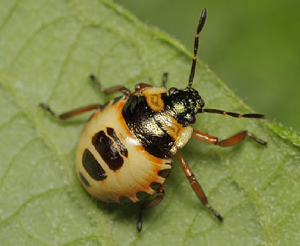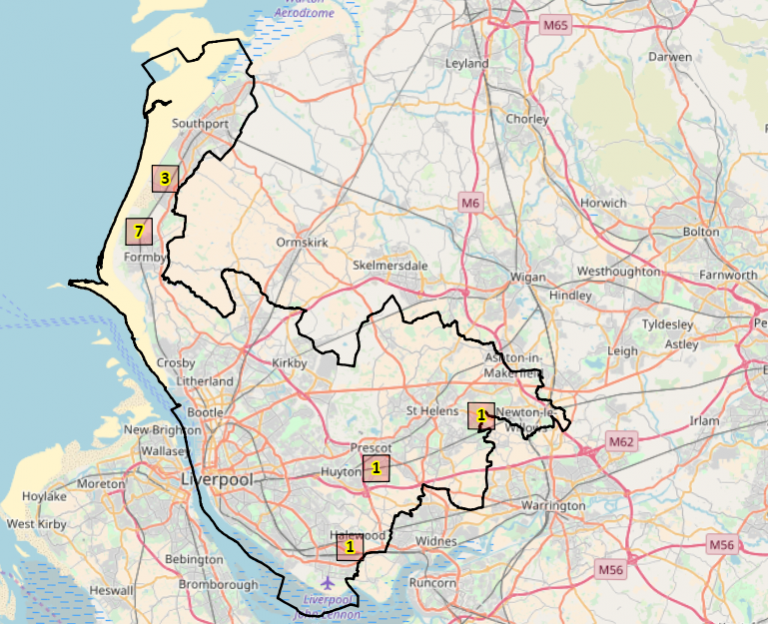
Family: Pentatomidae
Adult Size: Length: ca. 10.0 to12.0 mm.
Identifying features: This is one of four carnivorous species found in Britain. The Bronze Shieldbug is light brown in colour with dark metallic looking punctures which has an orange band on the penultimate antennal segment. The legs are mottled brown and the scutellum lacks an orange-yellow tip. The lateral extensions of the pronotum appear upturned and rounded. The connexivum can appear black/yellow striped.
Habitat: A woodland species, associated with both deciduous and coniferous trees and shrubs occurring at all heights amongst the foliage.
Distribution: Widespread across southern and central England and Wales as far north as Durham. It is also present throughout most of Ireland.
Months seen:
Adult: found throughout the year
The larvae are active from June until September, feeding on plants while young, but preying on the larvae of moths and beetles, as they become larger.

Mid-instar nymph
© Tristan Bantock
There is one generation per year, the nymphs feeding on plants as well as other insects, particularly caterpillars. New adults may be found from July onwards over-wintering and then mating the following spring.
Similar species:
Picromerus bidens has pointed thorn-like projections on the pronotum.
The Forest Bug (Pentatoma rufipes) lacks the yellow band on the penultimate segments of the antennae. It has an orange tip to the scutellum and orange legs.
- Bantock (2018)
- Bantock & Botting (2018)
- Bradley (2017)
- Evans & Edmondson (2005)
- Judd (2009 & 2010)
- Pendleton & Pendleton (1997—2018)
- Wikiwand (2018)
- Wikimedia Commons (2018)
